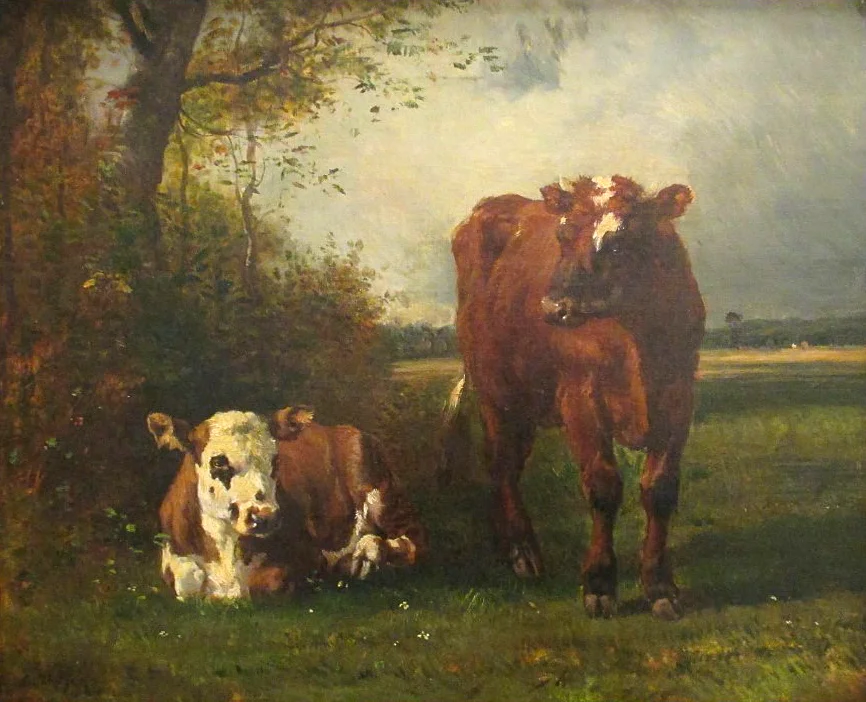Berger et ses moutons, oil on canvas, c.1950
Constant Troyon
(French 1810-1865)
Born on August 28, 1810, Constant Troyon was a French painter of the Barbizon school. He began his career painting landscapes, but became distinguished for his paintings of animals during the latter part of his career. Troyon’s works are known for their muted tonal qualities, harmonious color blending, loose brushwork and soft form, as was typical of the Barbizon school. His notable colleagues include Millet, Rousseau, Dupré, Daubigny and Corot.
Born in Sèvres, near Paris, to a porcelain manufacturer father, Troyon was raised primarily by his grandmother, who encouraged his artistic pursuits. By age 20, he was a master of decorative arts, but largely self-trained in painting. He began traveling and painting landscapes the following year, earning money as a decorative artist when funds ran low. He began studying with French Romantic painter Camille Roqueplan, who introduced him to Rousseau and other Barbizon painters. Troyon spent 1840 through 1847 painting landscapes in the Barbizon style, although he never quite found his stride.
His mastery of style came following an 1846 trip to the Netherlands, where he visited The Hague and was inspired by Dutch animal painters, such as Paulus Potter's celebrated Young Bull painting, as well as Rembrandt’s masterpieces. Animal paintings became his signature focus, adapted within his atmospheric and tonal landscapes. Awarded high honors at the Paris Salons of 1846 and 1848, Troyon became one of Europe's most renowned painters as he left the Barbizon school behind.
Troyon frequented the Norman coast throughout most of the 1850s, finally settling in Villers-sur-Mer. Before his health began to fail, his prolific painting career neared its end with a successful 1859 showing at the Salon.





